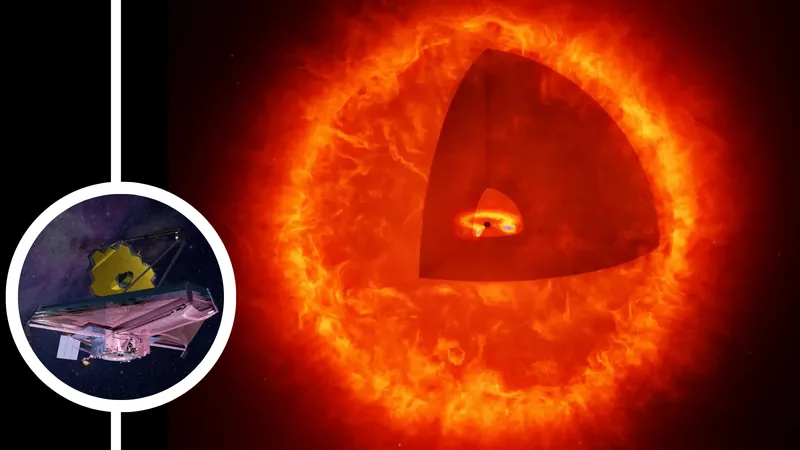
Are We Really Seeing 'Black Hole Stars' in the Early Universe?
2025-09-15
Author: Amelia
New Discovery of 'Little Red Dots' Rocks Astronomy
Recent studies suggest that the mysterious 'little red dots' observed by the James Webb Space Telescope might not be just early galaxies. Instead, these enigmatic objects could represent a groundbreaking new category of cosmic phenomena dubbed 'black hole stars.' If proven true, this theory could revolutionize our understanding of how enormous black holes grew to titanic sizes just a billion years after the Big Bang.
The Mystery Behind the Little Red Dots
These little red dots are one of the most intriguing discoveries made by JWST, theorized to be galaxies that existed less than 700 million years post-Big Bang. Scientists initially thought they were surprisingly well-formed galaxies bustling with aging stars, but this notion is beginning to falter. Dubbed 'universe breakers,' these findings challenge longstanding beliefs about galaxy formation and cosmic evolution.
A Surprising New Identity for Cosmic Objects
Instead of being ancient galaxies, the 'little red dots' might actually be massive spheres made of hot, dense gas resembling star atmospheres. However, these cosmic giants don’t rely on nuclear fusion for energy. Instead, they are powered by supermassive black holes voraciously consuming surrounding matter and releasing energy.
As Joel Leja, a team member from Penn State University, explained, their analysis led them to conclude: "What we thought were tiny galaxies filled with cold stars could actually be one colossal, very cold star." This new perspective could clarify why these dots appear significantly more massive and bright than expected.
Revelations from 'The Cliff'
Initially identifying these red dots as ancient galaxies, the researchers altered their approach upon discovering a large object nicknamed 'The Cliff.' Located approximately 12 billion light-years away, The Cliff exhibited properties that suggested a singular entity rather than numerous closely packed stars.
The investigation revealed The Cliff's brilliance stemmed from a supermassive black hole encased in a fiery gas sphere, challenging existing models of black hole formation.
The Quest for Answers
The prevailing mystery is how these supermassive black holes achieved their staggering mass in a universe less than a billion years old. The traditional theory of black hole growth through mergers lacks sufficient time for such rapid development, making findings like The Cliff essential for deepening our understanding.
Leja noted, "No one really knows how gigantic black holes emerge in galaxies. These black hole stars might mark the initial stage in the life cycle of supermassive black holes we observe today."
The Journey Continues
As JWST continues examining these early cosmic phenomena, researchers are eager to explore the validity of these intriguing findings. Leja concluded, "This is our best interpretation so far, and while we may be wrong, the universe is filled with surprises, and we're committed to uncovering its mysteries."









 Brasil (PT)
Brasil (PT)
 Canada (EN)
Canada (EN)
 Chile (ES)
Chile (ES)
 Česko (CS)
Česko (CS)
 대한민국 (KO)
대한민국 (KO)
 España (ES)
España (ES)
 France (FR)
France (FR)
 Hong Kong (EN)
Hong Kong (EN)
 Italia (IT)
Italia (IT)
 日本 (JA)
日本 (JA)
 Magyarország (HU)
Magyarország (HU)
 Norge (NO)
Norge (NO)
 Polska (PL)
Polska (PL)
 Schweiz (DE)
Schweiz (DE)
 Singapore (EN)
Singapore (EN)
 Sverige (SV)
Sverige (SV)
 Suomi (FI)
Suomi (FI)
 Türkiye (TR)
Türkiye (TR)
 الإمارات العربية المتحدة (AR)
الإمارات العربية المتحدة (AR)